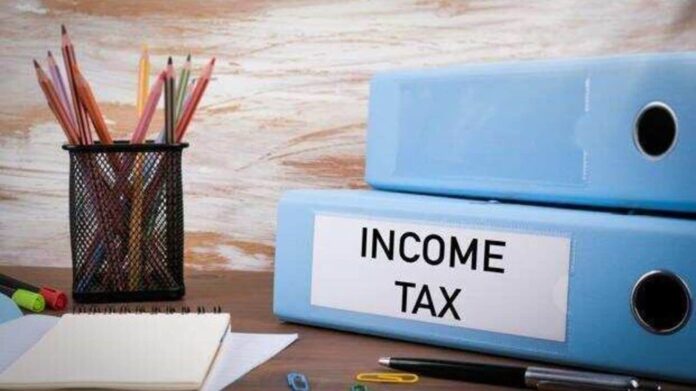Budget 2025 may bring significant relief to taxpayers, as the government is reportedly considering reducing income tax rates for individuals earning up to ₹10 lakh annually. This proposed move aims to modify the new tax regime and potentially boost disposable income, fostering increased consumption and economic growth. According to NDTV Profit, this tax cut could create a positive impact on middle-class households, who form the backbone of India’s economy.
Current Tax Rates And Proposed Changes
As of now, individuals earning between ₹7-10 lakh annually are taxed at 10% under the new tax regime introduced in previous budgets. The potential revision could either reduce the percentage or expand the zero-tax threshold to include a larger segment of taxpayers. If implemented, these changes are expected to encourage more individuals to adopt the new tax regime, which had previously seen a lukewarm response.
The government’s motivation behind this reform is rooted in its broader economic agenda. By increasing disposable income, the administration hopes to stimulate demand for goods and services, thereby supporting sectors like retail, real estate, and automotive. Additionally, the revised tax structure could simplify compliance and reduce the financial burden on middle-income groups, allowing them to allocate funds towards investments or savings.
Focus On Middle-Class Relief
Middle-class taxpayers, particularly those earning up to ₹10 lakh, have long been vocal about the need for reduced tax rates. With rising inflation, increased living costs, and limited salary increments, this demographic has often found itself stretched thin. By addressing their concerns in Budget 2025, the government aims to balance economic priorities with political considerations, especially in light of the upcoming general elections.
Such a move could also enhance India’s tax compliance rate. Currently, a significant portion of the population either underreports income or avoids filing returns due to the perceived complexity of the tax system. Simplified rates and a more favorable regime could incentivize greater participation, ultimately broadening the country’s tax base.
Impact On Disposable Income And Consumption
One of the primary goals of the proposed tax cut is to increase disposable income for taxpayers. With more money in their hands, individuals are likely to spend on non-essential items, luxury goods, and travel, providing a much-needed boost to sectors that were hit hardest during the pandemic. Higher consumption levels could also benefit small businesses and startups, contributing to job creation and economic stability.
Furthermore, increased savings from reduced taxes could be channeled into investment options like mutual funds, fixed deposits, and insurance policies. This would not only help individuals secure their financial future but also support the country’s financial markets and banking sector.
Historical Perspective On Tax Reforms
India’s tax structure has undergone several changes over the years, with a focus on reducing rates and simplifying compliance. The new tax regime introduced in 2020 was a step in this direction, offering lower rates in exchange for forgoing exemptions. However, many taxpayers opted to stick with the old regime due to its benefits, such as deductions for housing loans and investments under Section 80C.
The upcoming Budget could mark a turning point by making the new regime more attractive. If the government succeeds in aligning tax rates with public expectations, it could pave the way for a unified and simplified tax system that eliminates redundancies and promotes transparency.
Challenges And Concerns
While the proposed tax cut has generated excitement, it also raises certain concerns. Critics argue that reducing rates could lead to a temporary dip in government revenue, potentially affecting public spending on critical sectors like healthcare, education, and infrastructure. To address this, the administration may need to strike a delicate balance between offering relief and ensuring fiscal stability.
Additionally, there is speculation about whether these changes will benefit all taxpayers equally. High-income earners, for instance, may feel that the proposed reforms do little to address their tax burden. The government will need to ensure that its policies cater to a wide spectrum of taxpayers without disproportionately favoring any particular group.
Expectations From Budget 2025
Budget 2025 is shaping up to be a pivotal moment for India’s economy, with the government under pressure to deliver meaningful reforms. Beyond income tax cuts, experts anticipate announcements related to job creation, infrastructure development, and digital innovation. Measures to support startups, MSMEs, and women entrepreneurs are also expected to feature prominently in the Finance Minister’s address.
From a taxpayer’s perspective, clarity on the long-term vision for India’s tax system will be crucial. Simplified structures, reduced compliance burdens, and transparent processes could go a long way in building trust and fostering economic growth.
A Step Towards Inclusive Growth
The proposed income tax cut for individuals earning up to ₹10 lakh reflects the government’s commitment to addressing the needs of the middle class. By increasing disposable income, promoting consumption, and fostering economic participation, this reform has the potential to create a ripple effect across industries and demographics.
As the countdown to Budget 2025 continues, all eyes are on the government to deliver policies that strike a balance between relief and revenue generation. If executed effectively, these measures could not only boost taxpayer morale but also set the stage for a stronger, more resilient Indian economy.



